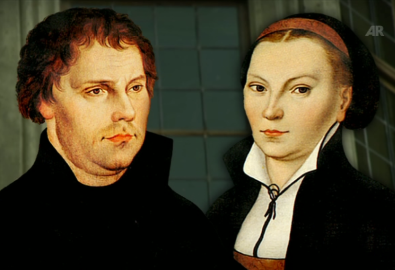
Who would have dreamed that the marriage of an excommunicated monk and a runaway nun would lead to the most admired expression of family life in northern Europe over the past 500 years?
The monk was Martin Luther, the man who almost singlehandedly launched the Protestant Reformation.
The nun was Katharina von Bora, one of a small group of young women who fled their convent with the help of a fishmonger. The nuns, hiding inside smelly barrels normally packed with herring, were transported by wagon to the town of Wittenberg, Germany.
That was Ground Zero for Luther’s unfolding new ministry following his departure from the authority of the Catholic Church. Just a few years earlier it would have been unthinkable for him to advocate that men and women who had taken lifetime vows of celibacy should look for marriage partners. But numerous ecclesiastical traditions, many of them deeply cherished by Rome, were suddenly up for grabs.
Luther felt the least he could do was help the “fishy” nuns find new life situations. Several of them returned to their families of origin.
Katharina was the last nun standing. After her mother had died, her father had remarried and sent her to the convent. Now he wanted nothing to do with her.
Over the next two years she worked as a domestic servant, hoping she might find someone to marry. Luther tried his hand at matchmaking, but without success. Katharina was now 26 years old – definitely approaching the upper age limit for marriageable young women. Luther was 41. He had never seriously imagined anything but the single life.
But gradually it dawned on him that getting married might set an example for the emerging Reformation.
During a visit to his aging parents, he resolved to cross the line. Luther concluded he had three good reasons to get married. First, it would please his father, whose name might be carried on if he himself could father a son. Second, he could “spite the pope and the devil” (a motivation not usually cited in 21st century Facebook wedding announcements). And third, it would seal his witness before his expected martyrdom. Luther had lived for at least a half dozen years expecting at any moment to be kidnapped and burned at the stake by Catholic sympathizers.
Once his mind was made up, he moved quickly.
Now…who could he marry? Well, there was Katharina. She acknowledged she was willing to marry this man who had been kind to her.
Luther wrote, “I would not exchange Katy for Germany or France, because God has given her to me.” I wish to anything I had come up with a breathtaking line like that before my own wedding. Luther, unfortunately, kept writing: “[Besides], other women have worse faults.” There’s a reason why Hallmark has never launched a Martin Luther line of Valentine’s Day cards.
It wouldn’t be accurate to say that the bride and the groom had feelings of affection for each other on their wedding day.
Luther admitted, “If I can endure conflict with the devil, sin, and a bad conscience, then I can put up with the irritations of Katy von Bora.”
But after exchanging vows on June 13, 1525, something wonderful happened. They began to fall in love.
At first they were shocked simply to be together. “One wakes up in the morning and finds a pair of pigtails that were not there before,” Luther mused. But he quickly surrendered his heart. He called her “my Lord Katy.” He began to refer to Galatians (the book of the Bible he loved the most) as “my Katharina von Bora.” Neither of them owned more than a few coins, having previously made vows of poverty. But friends of the Reformation made sure they always had bread, beer, and cheese.
Ultimately they had six children of their own, in addition to raising four orphans.
Luther had figured that his out-of-the-blue, late-life nuptials would “cause the angels to laugh and the demons to weep.” He could hardly have foreseen their long-term impact. Katy and Martin’s life together rewrote the European script for marriage.
For centuries it had been assumed that the express lane to heaven went through the monastery or the abbey. People who were serious about spiritual maturity took vows as monks or nuns.
But the longer he experienced the highs and lows of married life – the everyday realities of petty disagreements, holding sick children, and telling stories around a crackling fire – the more Luther realized that marriage was a school. It was a school for character. This was the setting where ordinary women and men could learn how to forgive, how to be persevere during tough times, and how to love God and each other.
You didn’t need a seminary degree to grow in grace. As Luther put it, if a wife would “school herself” to learn how to make her husband glad to cross his threshold at night, and if a husband would learn how to make his wife sorry to see him leave, then they would have accomplished as much as if they had matriculated at one of Europe’s great universities.
Even after five centuries, no one has done more than this poor-but-happy couple to define German domesticity.
As Luther once said with a smile, “Katy, you have a husband who loves you. Let someone else be empress.”
May God grant that we, too, have the wisdom to grasp that simply loving and being loved makes us the richest people on earth.
